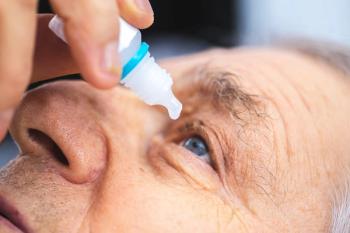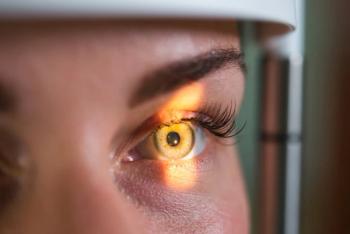
Olopatadine: Once-daily dosing benefit
Olopatadine hydrochloride ophthalmic solution 0.2%, a combination mast cell stabilizer and antihistamine, effectively relieves the itching associated with allergic conjunctivitis with once-daily dosing.
Norfolk, VA-Improved quality of life for patients with allergic conjunctivitis is the name of the game for Stephen V. Scoper, MD, who uses olopatadine hydrochloride ophthalmic solution 0.2% (Pataday, Alcon Laboratories) to treat this patient population because of the increased compliance that the drug affords with its once-daily dosing requirement.
First, the symptoms of eyes red and itchy from seasonal allergic conjunctivitis are related directly to the level of the pollen count on a specific day. By the time patients arrive for their appointments, the pollen count may have decreased, the patients may no longer have red, itchy eyes, and they may feel better, with no symptoms.
Second, ECPs also should ask patients if they are self-medicating with over-the-counter (OTC) allergy pills or allergy eye drops and the level of relief they are obtaining.
"This tells us the diagnosis," he said. "However, by using prescription medications, we generally can do a better job than the OTC products."
The story of olopatadine
Olopatadine 0.2% is a newer formulation of olopatadine hydrochloride ophthalmic solution 0.1% (Patanol, Alcon Laboratories) and is taken once rather than twice daily.
"[Olopatadine 0.2%] is the same molecule . . . in a different concentration and with a different vehicle for once-daily instillation," he said. "[Olopatadine 0.1%] has been the gold standard for treating allergic conjunctivitis for 13 years."
The molecule is a combination therapy comprising a mast cell stabilizer and an antihistamine.
"This combination is a better molecule for the eye than the other combination drugs, which were developed from systemic drugs and converted into eye drops," Dr. Scoper said. "The [olopatadine 0.1%] molecule was originally formulated as an eye drop and was never a systemic formulation."
He has used olopatadine 0.1% successfully in his practice for years but said prefers the newer formulation because of its once-daily dosing compared with the older version, which is instilled twice daily.
"Once-daily dosing is a big advantage of [olopatadine 0.2%], which works just as well as [olopatadine 0.1%]," he emphasized. Instillation in the morning prevents the development of red, itchy eyes throughout the day-especially important for patients who wear contact lenses.
Newsletter
Want more insights like this? Subscribe to Optometry Times and get clinical pearls and practice tips delivered straight to your inbox.









































